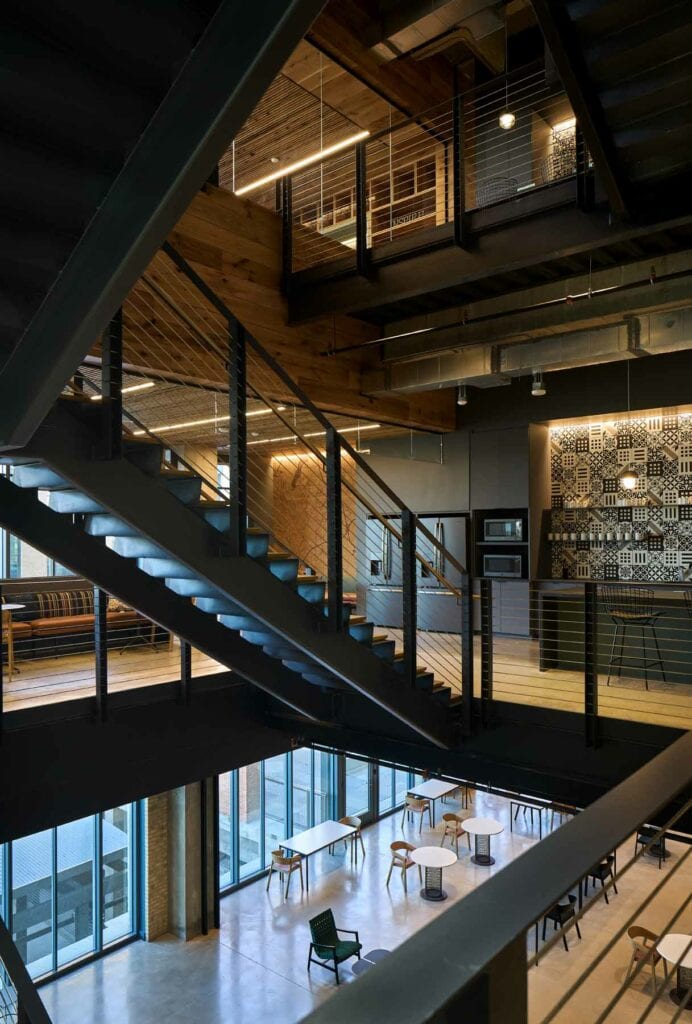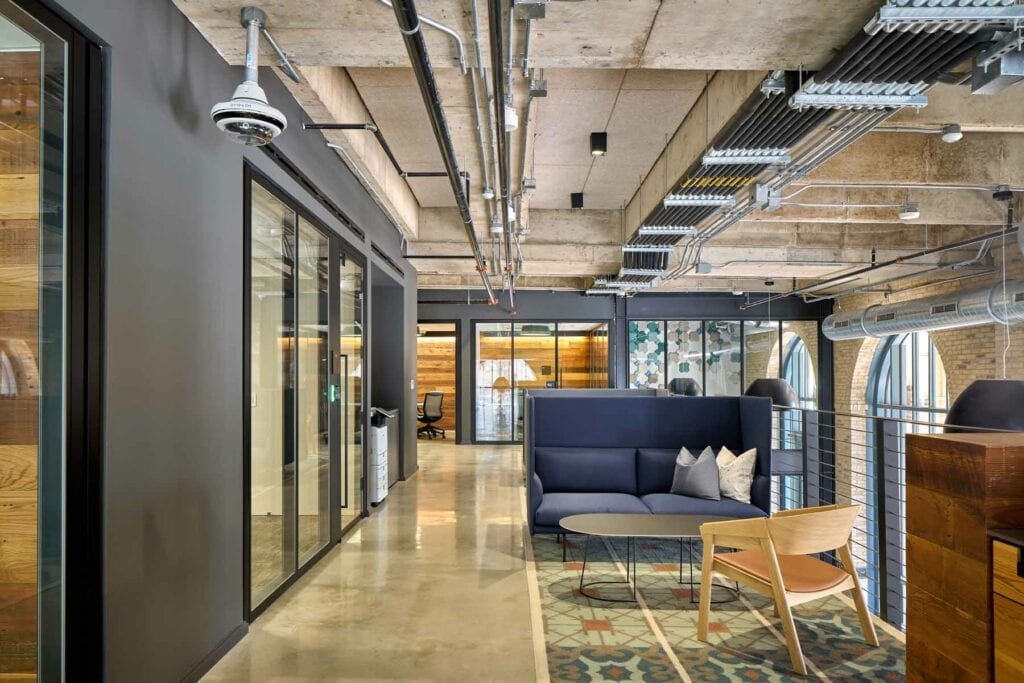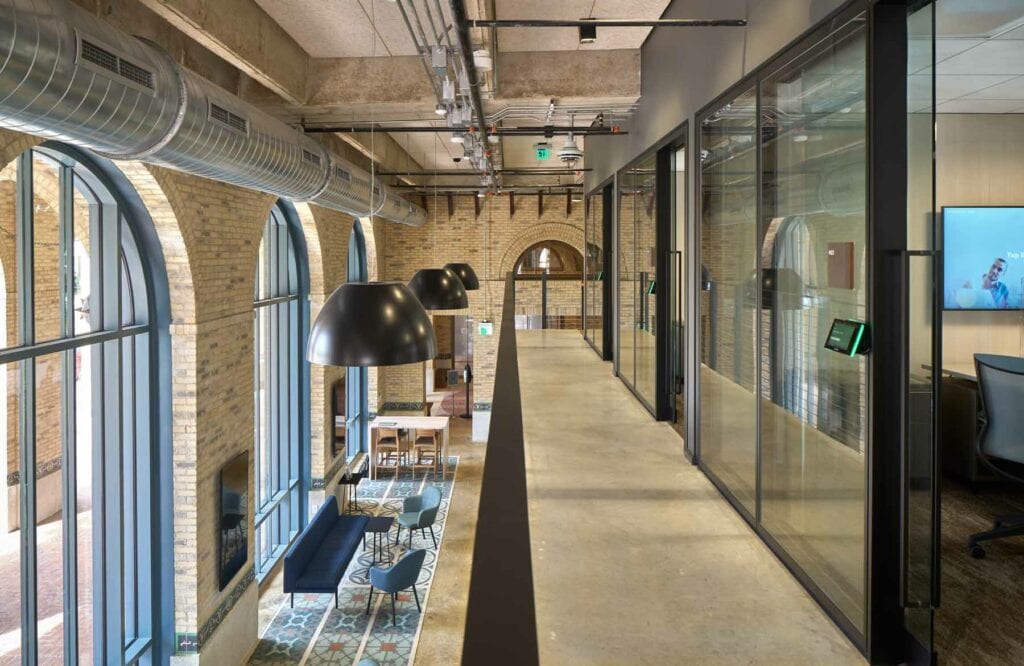The Broadway Office Development
Project Features, Challenges, and a Passion for Sustainability at the Oxbow and Credit Human Headquarters
Project Narrative by Joeris General Contractors
Estimated reading time: 15 minutes
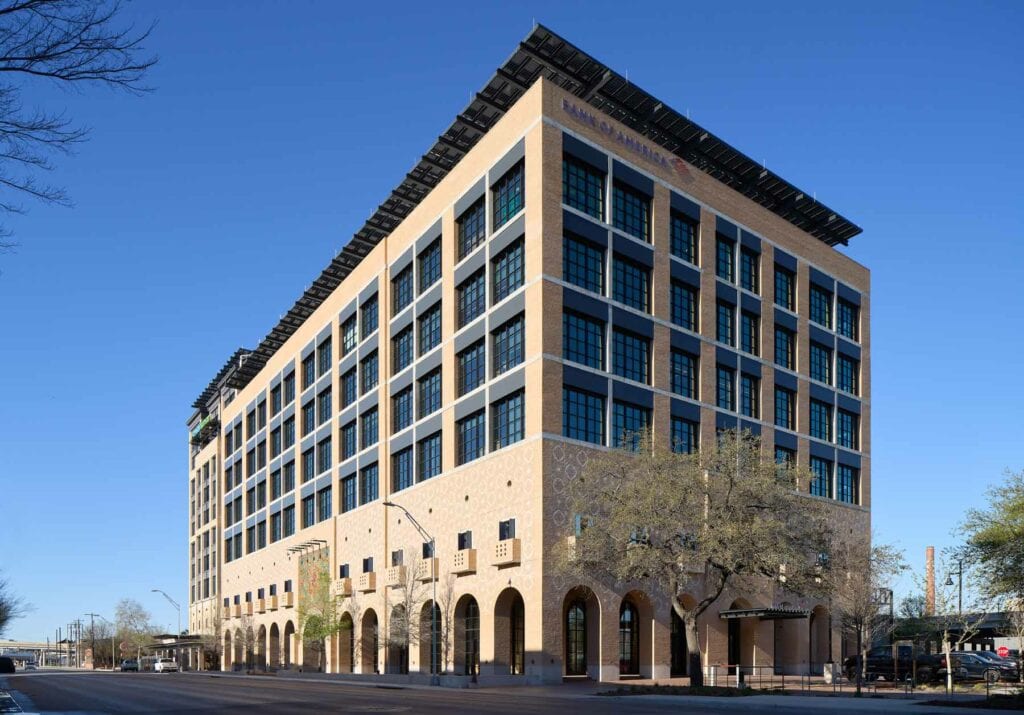
The Broadway Office development is a LEED platinum, highly energy-efficient eight-story office building with an accompanying six-story mixed-office and retail development located on a 3.1-acre lot off the northwest corner of Broadway and Pearl Parkway, just on the other side of HWY 281 from the Pearl Brewery.
The Broadway Office development is an eight-story office building with an accompanying six-story mixed-office and retail development located on a 3.1-acre lot off the northwest corner of Broadway and Pearl Parkway, just on the other side of HWY 281 from the Pearl Brewery.
The full project scope includes an eight-story, client build-to-suit headquarters office building over a structured parking garage (podium style project) and a four-story multi-tenant office building over a structured parking garage (podium style project).
The four-story structured parking garage accommodates approximately 980 total cars with one level of parking below ground. The structured parking garage includes a ground-level dock, as well as a roof terrace.
Also included in the scope of the project are the core and shell for the ground floor commercial space, demolition of existing foundations and structures as required, and any associated site work, courtyards and landscape.
Watch us build the project from start to finish
Project Features
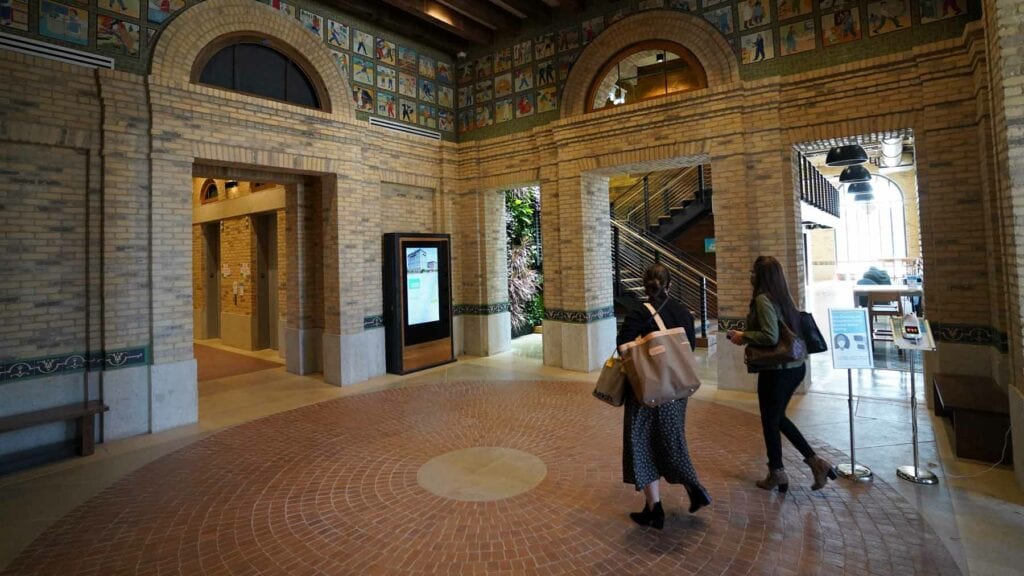
Interior Finish-Out of Credit Human
Credit Human interior finish-out space was designed to provide a space reflecting the surrounding community, appreciating the Credit Human Members, employees, partners, as well as celebrating the long-term relationships. To capture the owner’s goals, the design implemented a connection to nature, exposure to daylight, a mixture of natural and industrial materials, having a choice to work/meet in different workspaces, as well as, have these spaces be engaging.
Using the space as well to display art highlighting Credit Human’s mission statement, member stories, and the implementation of building slack. The space also implements the use of shareable spaces/amenities that create a connection with the Credit Human members, as well as, the community partners. The overall space of Credit Human was designed to be open and flexible to allow for the interaction of the employees, as well as their interaction with its members.
With this open concept, there was a great focus on the flexibility and functionality of all spaces including, the open work environment, the Financial Health Center (FHC), the public spaces, such as break areas, focus rooms, dining and serving areas, terraces, large and small conference rooms, phone rooms, huddle rooms, etc.

Final Appearance & Materials
The buildings and spaces as a whole were designed to push the envelope of sustainability. The materials selected on the interior finish-out did not shy away from these demands either.
All building materials used throughout the project were selected specifically by the design team, owner, and Joeris to meet the sustainability requirements, as well as implement the use of reclaimed materials, and specifically, locally sourced reclaimed materials.
Reclaimed materials
The development includes a reclaimed 20,000-gallon vertical water storage tank which was originally a horizontal brewing tank, as well as 20 smaller 100-gallon tanks reworked to become a fence blocking the view of electrical transformers and six reclaimed trusses from the original brewery installed as decorative elements.
The design team and construction team put forth a giant effort to make sure the building looked as if it was native to the skyline of San Antonio. To this end, the building facade used hundreds of intricate brick details on the first five floors. On the first five floors of both buildings, D’Hanis bricks were “tumbled,” in which they are rolled around with other bricks, and the edges are broken off to make them look older.
The tumbled brick was carried into the interior of the building and brick from a local plant was used exclusively in the construction of the garage.
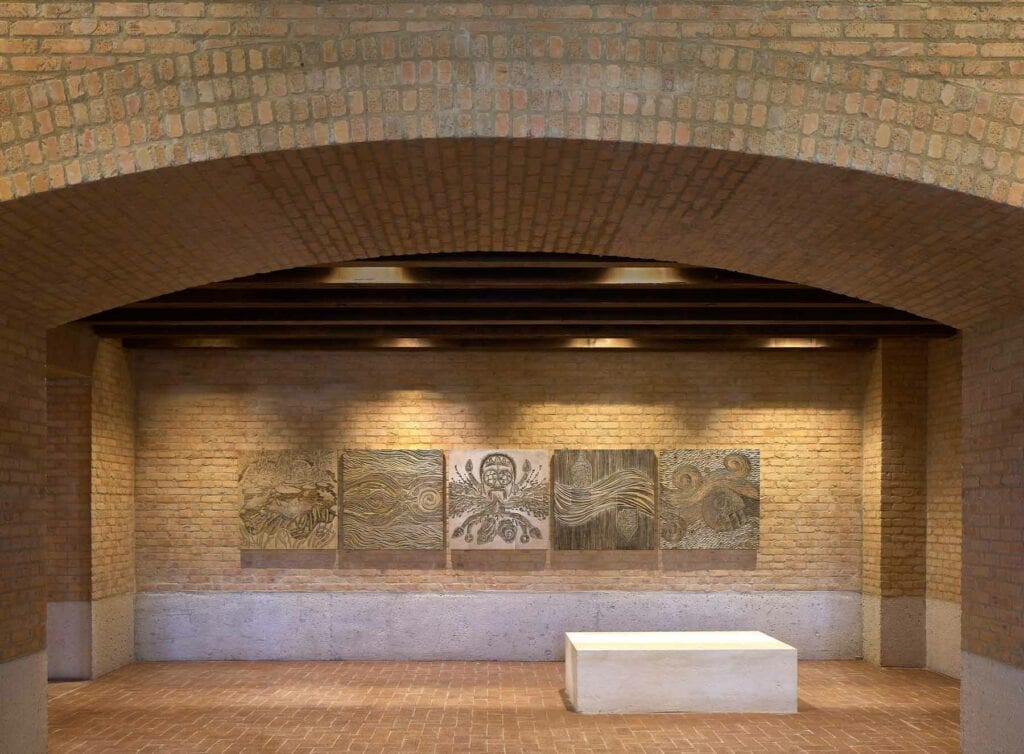
Implementation of Materials
Wood
There was an expansive amount of reclaimed wood materials and features used throughout the interior finish-out space that were locally sourced, including the reclaimed pine from the GJ Sutton building that was recently demolished on the east side of San Antonio.
This wood material was used on level one and the mezzanine of the FHC adjacent to the living green wall, as well as on the feature walls in all of the meeting rooms.
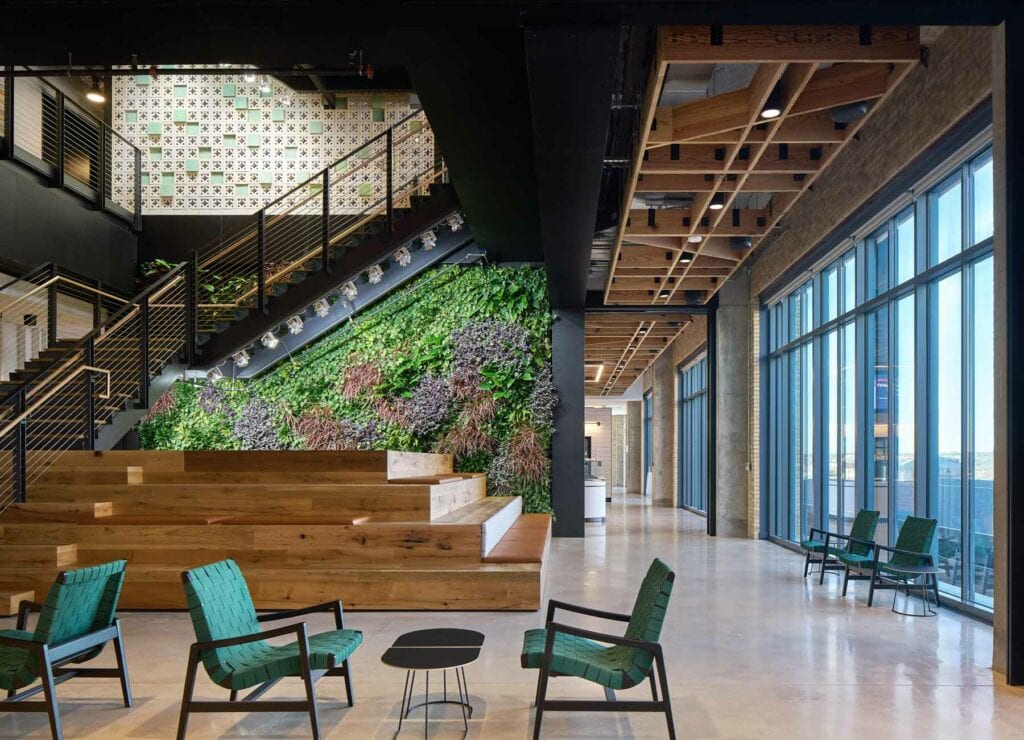
A majority of the reclaimed wood was a variety of red oak, white oak, and oak used specifically for the wood cladding details and millwork throughout the project including:
- Level one and mezzanine beverage stations
- Wood cladding in elevator lobbies on all levels
- Wood trellis system in the dinning and serving areas on level 5
- Millwork credenzas and shelving units on level 5
- Wood Cladding, treads, and landings at the social stair and monumental stair starting on level 5 and carrying up through level 12
- Wood millwork at the break areas and focus rooms on levels 6 through 12
Metal
There was also a large number of metal finishes used throughout the building, including a prominent steel stair structure installed in concrete slab voids created during the installation of the core and shell building structure on levels 6-11.
There was also an exposed steel structure used to create the mezzanine level of the Financial Health Center.
Carried throughout the space are solid steel members, as well as metal and steel cladding details as follows:
- Metal cladding at the living green wall surrounds on levels 1 & 5, and social stair feature wall surrounds
- Metal and steel details at the FHC ITMs
- Exposed steel structure at the FHC and the Amenities level on 5
- Steel window wall system on level 1 and level 5
- Steel portals at large conference rooms, elevator lobby entrances, and elevator doors
Workplace Flexibility & Ambiance Achieved
To achieve the flexibility of the open work environment, building materials and systems were selected to allow for Credit Human to have the option to move throughout the space.
Systems such as a low-profile raised floor were installed on levels 6-12 to allow for the flexibility of workstations and huddle rooms.
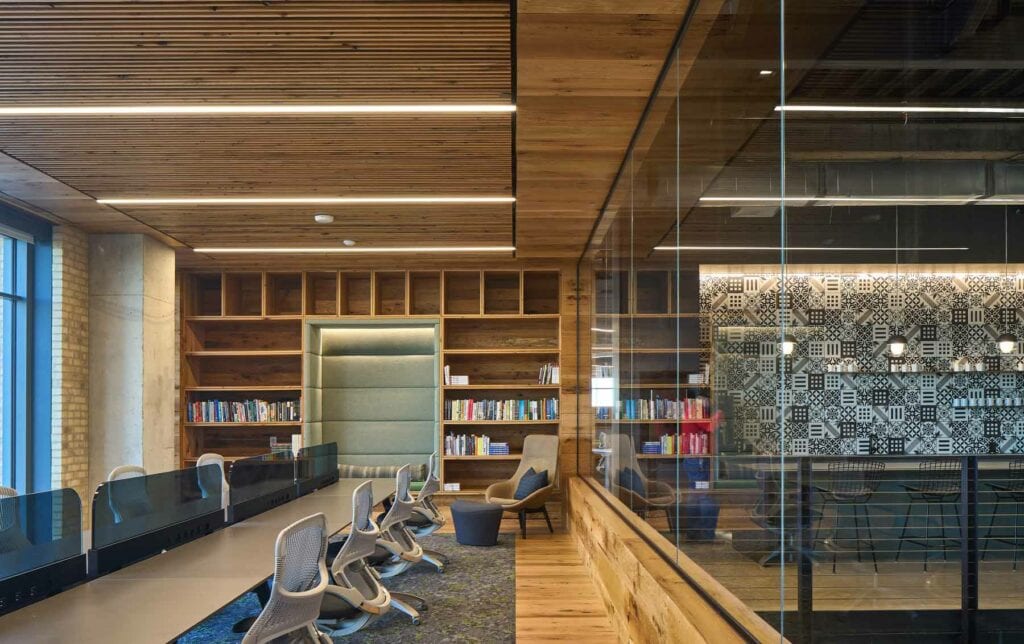
Demountable wall and pod systems were installed throughout the building to allow for the flexibility of space used in conference rooms, huddle rooms, open collaboration, phone rooms, and workrooms. With the open work environment, careful thought was put into the acoustics of the open work areas.
Ceiling baffles & ceiling clouds were installed to help with acoustics and provide a filter between the workspace and exposed MEP systems above. There were also fabric panels installed in conference rooms to help with reducing noise levels.
Installation Challenges
Custom Materials
A majority of the building materials used in the interior finish-out are custom.
- Demountable
- Steel Window Wall Systems
- Wood Cladding
- Steel Cladding
- Brick
- Breeze Block
Installation of Large Building Systems in Finished Core & Shell Space
There were some large scopes of work that were implemented in the design that had to be carefully thought out, designed, built, scheduled, and installed in the interior finish-out space. One of the first design components to be installed and coordinated was the installation of the interior brick and steel stairs.
The interior brick was designed to clad all of the exterior walls on the inside of the Credit Human space mimicking the exterior brick installation.
The brick had to be released during pre-construction to arrive on-site in time to have installed prior to MEP systems being installed to minimize dust exposure to MEP systems.
MEP Systems
Highly efficient infrastructure
The building utilizes a hybrid condenser water system comprised of a geothermal bore field, cooling towers, fans, and pumps, to optimize the energy efficiency of the building.
The cooling towers were selected with low static, high-efficiency fans to maximize the amount of energy transferred per horsepower. The condenser water pumps were selected to provide maximum efficiency and are provided with intelligent onboard VFDs to match the water flow of the towers and central system to the building load. With these strategies in place, this building will be highly efficient, reducing energy and water consumption.
Ultra-high efficiency building envelope
One of the buildings features walls with four inches of continuous insulation and a thermally broken window system, a type of window construction in which there is a barrier between the inner and outer window frames that limits the heat transfer through the window. The wall system doubles the insulation compared to a Texas code baseline design. The glass selected by the tenant has a shading coefficient of 0.25, which is significantly more efficient than code minimum glass.
Geothermal System
There are 150 geothermal wells on the site that circulate water through a network of tubes 355 feet below the surface collecting and dissipating heat. The underground geothermal system will provide heat transfer for 40% of the annual building cooling load and 100% of the annual heating load. This will save an estimated 1.25 million gallons of water each year by reducing the load of the cooling towers.
Radiant Flooring
There is a radiant flooring system in the 5th-floor slab of the Credit Human tower (piping in the slab) that is fed by the condenser water system, that will warm the floor plate throughout cold fronts to reduce the need for heating when it’s cold out.
Photo-voltaic System (solar panels)
There is a 1-megawatt system, which happens to be the largest system in the country on a building of this size. Installation of 2,912 photo-voltaic panels totaling 1 megawatt of photovoltaic capacity on the roofs and parking structure of the building will provide an estimated 60% renewable energy for the building’s total annual electricity demand.

Water Heaters
The domestic water heaters are connected to the building’s condenser water system, which will help pre-heat the domestic water through an internal heat exchanger within the water heater allowing the water heaters to use less energy to heat the domestic water. Once the condenser water has raised the domestic water temperature as much as it can then the water heater turns on and heats the domestic water up the rest of the way to get to the required temperature.
Plug Load Controls (in the raised flooring)
Some of the outlets throughout the office floors are controlled by the light fixture occupancy sensors, so when no movement is detected for a certain amount of time that plug is automatically turned off. Also, these plugs are on a schedule to be off and on with the other building systems. This is another energy-saving function of the building.
Rainwater Capture
The building will use 97% less potable water than a typical 200,000 square-foot building. This is accomplished by both capturing water and conserving water use. Capturing rainwater and HVAC condensate for non-potable uses, such as toilet flushing, landscape irrigation, and cooling tower supply is an integral part of the building’s plumbing design. The rainwater/condensate harvesting system on the site can store up to 150,000 gallons of rainwater in above and below ground cisterns and day tanks – more than any other building in the San Antonio Water System (SAWS) service area.
Two of the water recapture tanks are salvaged tanks from the original Pearl Brewery. With the help of the City of San Antonio recycled water back-up, this system provides 100% of its non-potable water needs. As demand for water increases along with its cost, rainwater/condensate harvesting presents an incredible opportunity to help the community conserve potable water.
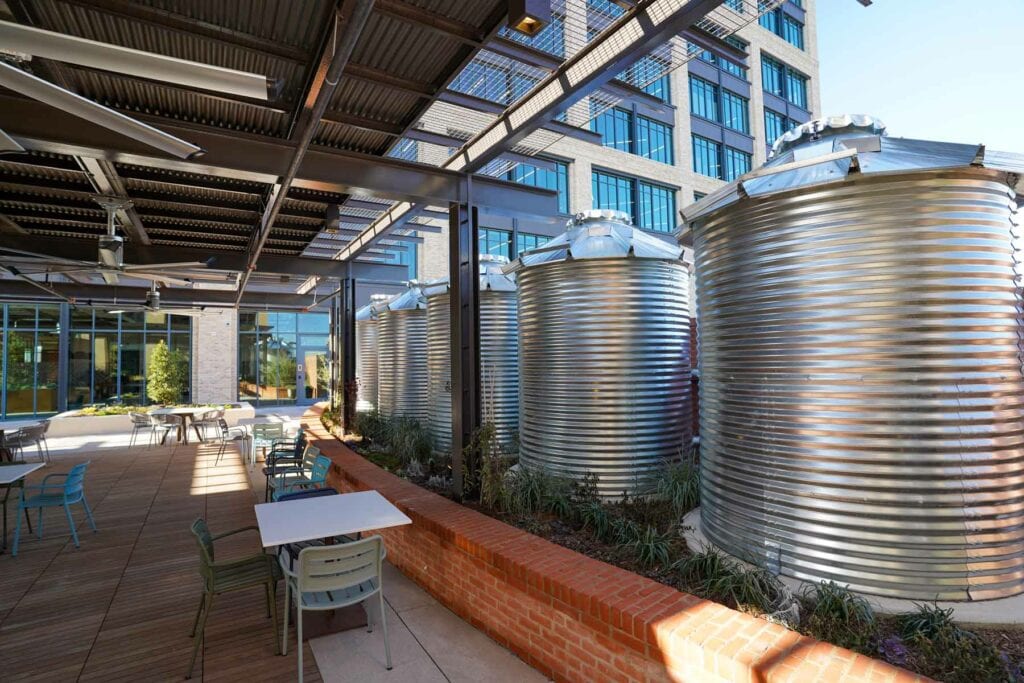
Recycled Water Connection from SAWS
They City of San Antonio has a recycled water line system that is available to qualifying buildings that basically utilizes grey water (sanitized, cleaned and treated sewage) to flush toilets with. This helps lower the usage of domestic water and is sold to the end user at a much cheaper rate than domestic water. This building has connection to the cities recycled water system.
Lighting Controls (occupancy sensors)
All of the lighting in the office spaced will be turned off based on occupancy sensors as well as the building scheduled on and off times. There are also daylight harvesting zones around the exterior (near the windows) that will dim based on the amount of sunlight coming through (all equal more energy savings).
Other energy-efficient fixtures and technologies are incorporated throughout the building, including LED lighting, advanced plug controls, and energy star appliances. Advanced plug load controls help save energy by switching off typical office loads such as computer monitor when spaces are unoccupied.
Boiler
This large commercial building has no boiler. Boilers use a lot of energy to run and typically are used for the HVAC system when heating is required. Instead, our variable refrigerant flow (VRF) system handles the building heating through refrigerant.
Variable refrigerant flow (VRF) HVAC System
The heating and cooling for this building are all run by a Mitsubishi VRF system. This is a refrigerant-based system that can provide simultaneous heating and cooling and is the most energy-efficient HVAC system available. A VRF system utilizes high-efficiency condensing units and heat recovery boxes to minimize energy usage while providing increased occupant control and comfort for occupants.
The system accomplishes this by utilizing energy from other zones to heat and cool each other. For example, if Zone 1 is in cooling and Zone 2 is in heating, the VRF system takes the energy discharged into the system from Zone 1 and utilizes it to heat Zone 2. In addition to the energy savings, the material is saved during installation, as well as, the fan coils eliminate the need for bulky ductwork throughout the space.
SWEGON Dedicated Outdoor Air System (DOAS)
These units provide fresh air to the building. The SEWGON brand was selected by ownership because it was the most energy-efficient DOAS unit available. These units have an internal energy recovery wheel that uses the exhaust air from the building to transfer cooling to and pre-treat the incoming hot outside air before the outside air hits the unit’s cooling coils.
Energy recovery wheels really help save electricity. For example: if it’s 100 degrees outside, the unit does not have to cool 100 degrees air because the energy recovery wheel can pre-cool this air down to 80 degrees just by transferring the temperature from the conditioned building exhaust air to the incoming outside air. The air streams never cross, instead, there is an enthalpy wheel (energy recovery wheel) that is cooled by the exhaust air from the building, then the outside air blows through the other side of that wheel as it spins which cools the outside air stream before it gets to the units refrigerant cooling coils.
Sustainability Features leading to LEED platinum
Energy – 40% more efficient as compared to buildings of a similar size
Water – Estimated 97% of non-potable water collected from rainwater capture systems
Heating & Cooling – 150 geothermal wells to supply 100% of each building’s heat & 40% of air conditioning
Overcoming Challenges
The construction of the Broadway Office Development lasted more than two years and experienced many challenges throughout construction. One of the largest challenges the project team resolved was the coordination and connection of all building and utility systems.
With the extremely technology advanced systems, the team and trades collaborated together to connect the building with the following systems:
(1) Water Supply
- City domestic water supply
- Rainwater capture & treatment onsite via underground tanks
- City recycled water system
- Two separate water systems with redundancy backup
- Non-potable supply to toilets and urinal
- Potable supply to fire system, drinking fountains, sinks, etc.
(2) Waste water
(3) City power
- City primary power in the building
- Generator backup in an emergency
- Solar system producing power for the building and sending back extra power to the CPS grid
(4) Heating & Cooling
- Geothermal system loop
- Variable refrigerant system loop
- Water heathers tied into the VRF system loop
- Cooling tower
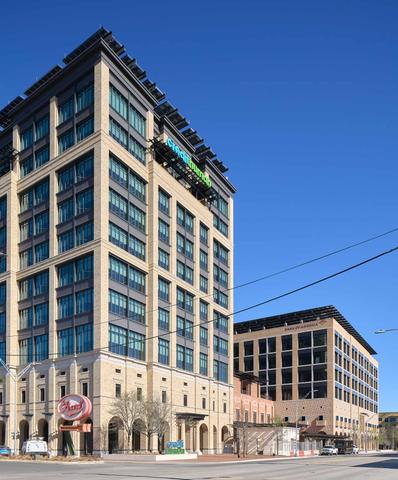
Future of construction
The design and construction of the Broadway Office Development have set a new standard for the industry. This project has proven that sustainable building is achievable and elevates the level of expectations for developers, clients, and communities. Transforming the people and places in our community drives us to continually seek out developers and clients, like Silver Ventures and Credit Human, who have a shared vision and mission of positively impacting the San Antonio community.
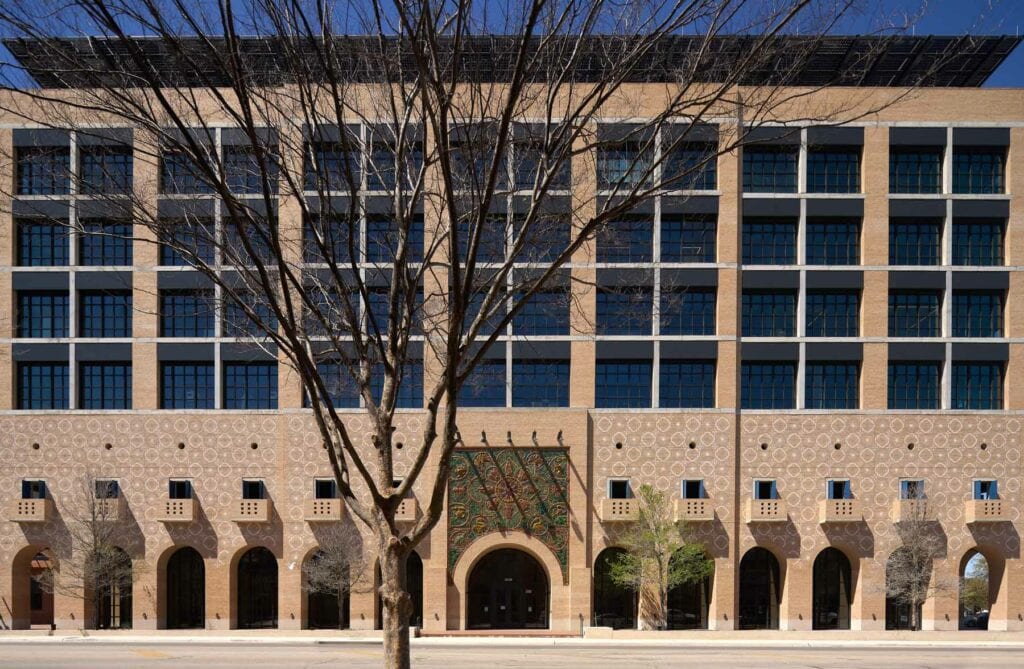
Project Awards
As of April 2021, the Broadway Office Development has received three construction awards.
- 2021 AGC Outstanding Construction Award – Local Level
- 2021 SABJ Building San Antonio Award – Best Green Project
- 2021 SABJ Building San Antonio Award – Best Office Development, Large
Related Projects
Across the street from the Broadway Office Development, sit several more Joeris projects. Read more about the award-winning projects Joeris has built at the Pearl.

